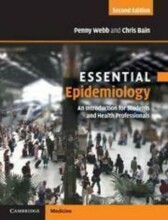Summary: Global Health
- This + 400k other summaries
- A unique study and practice tool
- Never study anything twice again
- Get the grades you hope for
- 100% sure, 100% understanding
Read the summary and the most important questions on Global Health
-
College 1
This is a preview. There are 5 more flashcards available for chapter 18/03/2019
Show more cards here -
Why study Global Health?
- Strong link between health, human development, labour productivity and economic development
- Enormous progress in improving health status over last 50 years in many countries
- However progress has been very uneven; many are left behind
- Disparities in health status, access to health services:
0 Within and across countries
0 Wealthier, urban dwellers, ethnic majorities better off
- World continues to shrink rapidly -
What are (global) health problems?
Crossing borders, magnitude, violation of human rights/ethics, the issue itself has a global nature -
College 2
This is a preview. There are 29 more flashcards available for chapter 19/03/2019
Show more cards here -
What are the key messages of the determinants of health?
Health status is determined most immediately by a variety of factors, including income, education, knowledge of healthy behaviors, social status, sex, age, genetic makeup and access to health services
The political will that countries have to improve health status, particularly for their poor, as well as policies and program in areas that affect health, such as economic management, education, nutrition, water and sanitation all have a major impact on health -
What are health indicators?
- From what conditions/diseases do people suffer
- Determining extent to which the disease causes death or disability (severity)
- Disease surveillance
Consistent set of indicators to make comparisons between and within countries, populations:
- Key health indicators
- Burden of Disease -> index taking into account morbidity, mortality, disability by age, gender, regions to make comparisons of health status across regions within a countries and across countries -
What are the key health indicators (with explanation)?
Indicators linked to the biggest health issues
Infant mortality rate -> aantal doden onder kinderen per jaar jonger dan 1
Life expectancy at birth -> leeftijd die je verwacht te halen als je geboren wordt
Maternal mortality ratio -> moedersterfte (van zwangerschap en geboorte)
Neonatal mortality rate -> 28 dagen oud sterftegraad
Under-5 mortality rate -> kans dat pasgeboren baby niet leeftijd van 5 haalt
Morbidity: ziekte
Mortality: sterfte
Disability: handicap
Prevalence: aantal mensen dat lijdt aan ziekte op bepaald moment
Incidence: hoe veel nieuwe gevallen -
In which three ways can diseases be classified?
Communicable disease (infectieziekte): illnesses causes by a particular infectious agent that spread directly or indirectly from people to people, animals to people or people to animals
Non-communicable disease (chronisch): illnesses not spread by an infectious agent
Injury: include road traffic injuries, falls, self-inflicted injuries and violence, among other things -
What are the two indicators for the burden of disease?
- Health Adjusted Life Expectancy (HALE): summarizes expected number of years to be lived in what might be termed the equivalent of good health, a health-expectancy measure, to calculate HALE: the years of ill health are weighted according to severity and subtracted from overall life expectancy
- Disability Adjusted Life Years (DALY): verwachting aantal jaren in ziekte te leven -
Give more information on Health-education-economics.
Health-income:
- Health usually increases as national income increases
- Illness often leads to a decrease in earnings
- Costs of illness can cause individuals and families to dispose of assets and fall into poverty
- Indirects costs to illness, such as transportation
- Long-lasting disabilities generally require considerable expenditure on health services
Health-education:
- Education contributes to disease prevention and management
- Intergenerational links: parents' health and education affects their children
- Malnutrition and disease affect children's cognitive development and school performance
-> inkomen toename = gezondheidstoename, ziekte van kostwinner = afname gezondheid, onderwijs (ouders op kind overdragen) = voorkomen en beter omgaan omgaan met ziekte -
What are health disparities and the belonging common patterns?
- Health disparities: 'A type of difference in health that is closely linked with social or economic disadvantage'
Common patterns:
- Income -> education, water access, sanitation, hygiene, health services, safe work environments
- Being born female is dangerous to your health - especially in low and middle income countries (geweld, minder eten, minder onderwijs)
- Ethnicity: health status, access and coverage health services (meerderheden vaak betere gezondheid) -
What are the key messages on education, income and health disparities?
Education, knowledge correlated with:
a) appropriate health behaviors, healthy living
b) income opportunities
Health strongly associated with productivity and earnings:
a) healthier people can work harder, longer
b) better health promotes labor productivity, reduces country expenditure on health & creates attractive investment climate
- Higher grades + faster learning
- Never study anything twice
- 100% sure, 100% understanding





























